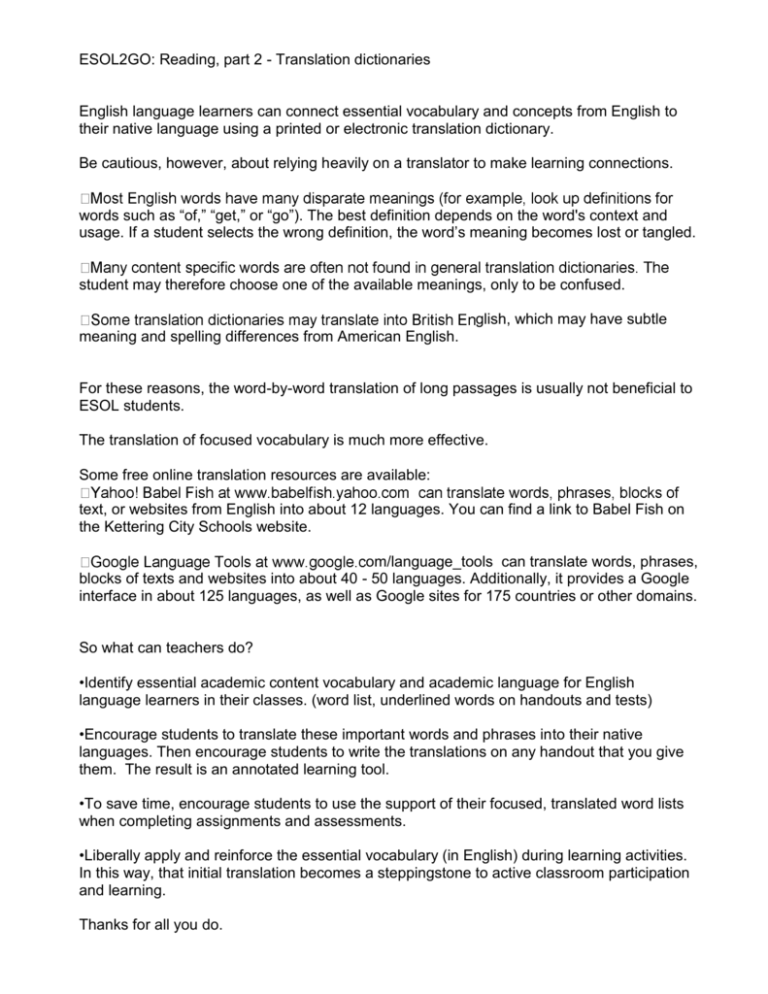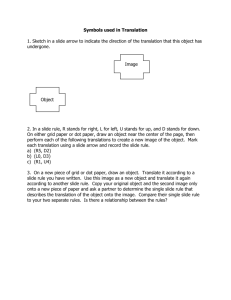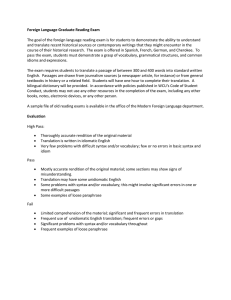ESOL2GO: Reading, part 2 - Translation dictionaries
advertisement

ESOL2GO: Reading, part 2 - Translation dictionaries English language learners can connect essential vocabulary and concepts from English to their native language using a printed or electronic translation dictionary. Be cautious, however, about relying heavily on a translator to make learning connections. words such as “of,” “get,” or “go”). The best definition depends on the word's context and usage. If a student selects the wrong definition, the word’s meaning becomes lost or tangled. student may therefore choose one of the available meanings, only to be confused. glish, which may have subtle meaning and spelling differences from American English. For these reasons, the word-by-word translation of long passages is usually not beneficial to ESOL students. The translation of focused vocabulary is much more effective. Some free online translation resources are available: text, or websites from English into about 12 languages. You can find a link to Babel Fish on the Kettering City Schools website. om/language_tools can translate words, phrases, blocks of texts and websites into about 40 - 50 languages. Additionally, it provides a Google interface in about 125 languages, as well as Google sites for 175 countries or other domains. So what can teachers do? •Identify essential academic content vocabulary and academic language for English language learners in their classes. (word list, underlined words on handouts and tests) •Encourage students to translate these important words and phrases into their native languages. Then encourage students to write the translations on any handout that you give them. The result is an annotated learning tool. •To save time, encourage students to use the support of their focused, translated word lists when completing assignments and assessments. •Liberally apply and reinforce the essential vocabulary (in English) during learning activities. In this way, that initial translation becomes a steppingstone to active classroom participation and learning. Thanks for all you do.











